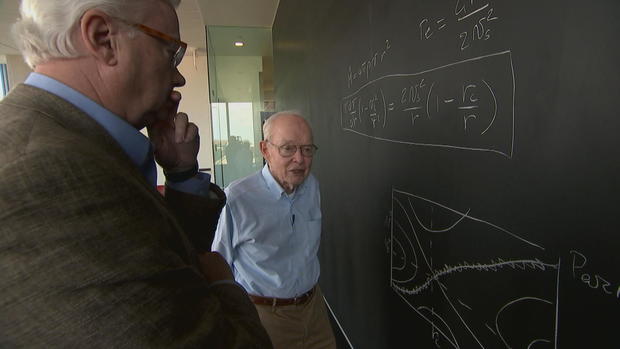NASA is set to launch a unique space mission next week that may revolutionize our understanding of the sun. The Parker Solar Probe will fly through the sun’s outermost atmosphere – the first spacecraft ever to do so.
The mission also marks another first in the history of U.S. space exploration: the spacecraft is named after a living person. CBS News’ Barry Petersen visited the astrophysicist at the University of Chicago.
Eugene Parker’s love affair with astrophysics started in high school. After earning his PhD, he headed to the University of Chicago where he started working as a research associate in 1955. Then, in 1958, he proved that the sun sent out supersonic streams of charged particles — what we now call solar wind — in addition to heat. It was inspiration followed by two years of mental sweat.
Parker had seen the same clues everyone else saw: Earth’s atmosphere bombarded with the solar radiation commonly known as the Northern Lights. He also saw that when comets passed through the solar system, the tails were always away from the sun.
Parker suspected it was solar wind that blew them outward. But when he went to publish his formula, he was not met with either scorn or acclaim.
“They simply declared the whole notion was ridiculous, and if you press them they would say, ‘Well, it must be: you must have made a mistake here because you came to a ridiculous conclusion,” Parker said.
But nobody could prove his equation wrong.
Parker visited his namesake as it was being readied for launch. He praised the people who designed it, just as many of them consider him a science superstar. Some have even called him the Brad Pitt of astrophysics. But perhaps in a sign of his dedication to science, Parker said he’s not entirely sure who Brad Pitt is.
The seven-year, $1.5 billion project will measure the supersonic speeds of the solar winds. Because the sun is an ordinary star, whatever we learn about it will apply to the majority of the stars in the galaxy, according to Parker.

Eugene Parker at the University of Chicago
CBS News
But even a hero astrophysicist who changed the way we see the stars has his limits when it’s comes to something closer to his earthly home – like his hometown Chicago Cubs.
“A baseball game is infinitely more complicated and involves factors about which you know nothing. How is this or that pitcher feel on the morning of the last game and so on and so forth,” Parker said.
As the solar probe begins its voyage, his lifetime voyage of discovery has not ended.
“I’ve always enjoyed learning how things work. … Simply endless puzzles and problems that come to light, some of them trivial, amusing, some of them very important and I take great pleasure in learning them,” Parker said.
And because of him, we will learn about our own sun, and that will teach us about almost all the stars that stretch to infinity.
© 2018 CBS Interactive Inc. All Rights Reserved.
